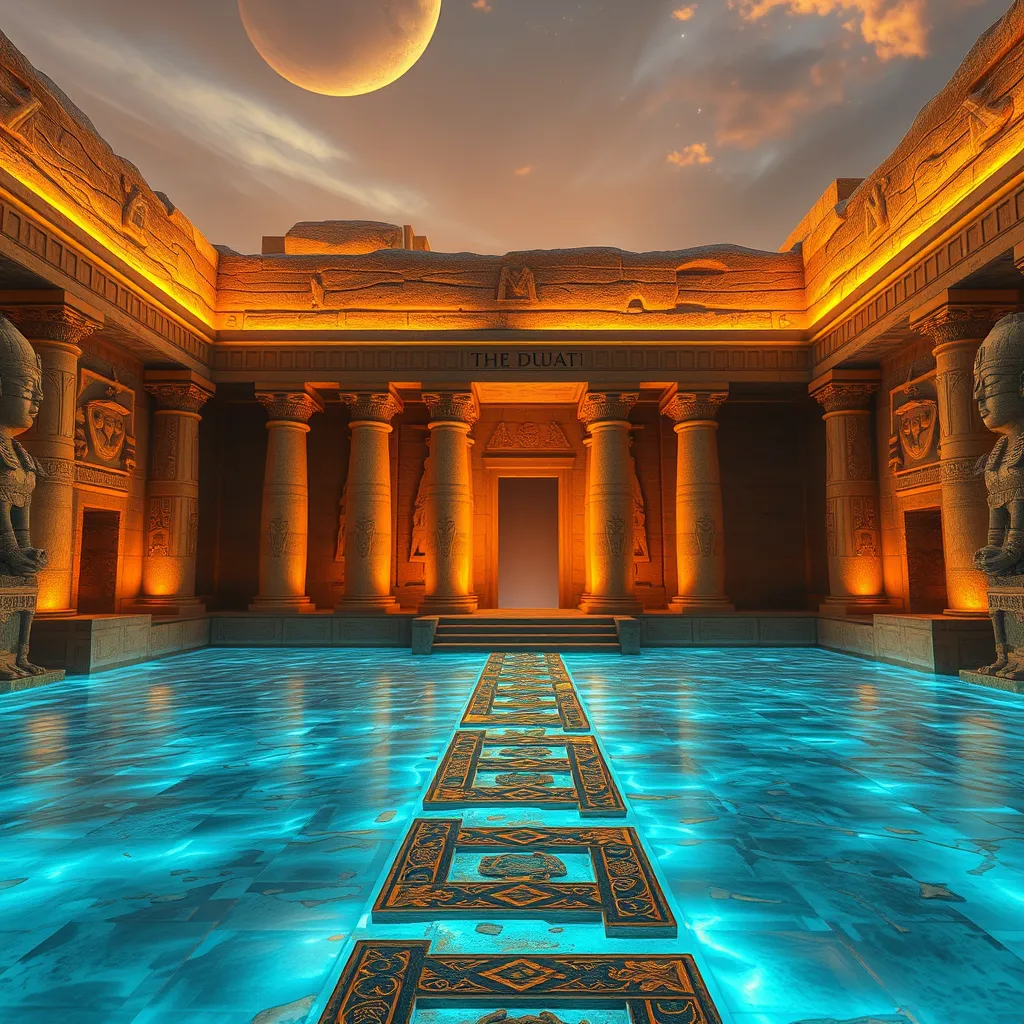The Duat: A Realm of Hidden Wonders
I. Introduction to the Duat
The Duat, in ancient Egyptian mythology, is the realm of the afterlife, a mystical place where souls journey after death. It is more than just a location; it is a complex representation of the challenges and processes that one must navigate to achieve eternal life. The significance of the Duat is profound in ancient Egyptian culture, encapsulating their beliefs about death, the afterlife, and the moral codes governing human behavior.
The Duat plays a crucial role in the afterlife, serving as the domain where souls are judged and transformed. This article aims to explore the hidden wonders of the Duat, delving into its structure, deities, mythological creatures, and its enduring legacy in modern interpretations.
II. The Structure of the Duat
The Duat is often depicted as a vast and complex landscape, consisting of various regions that the deceased must traverse. Each area represents different challenges and stages of the afterlife journey. The structure of the Duat can be understood through the following key regions:
- The River of Night: This dark river serves as a barrier between the living world and the afterlife.
- The Fields of Iaru: A paradise where the worthy souls reside, similar to the concept of the Elysian Fields.
- The House of Judgment: The place where the soul is weighed against the feather of Ma’at.
Key landmarks within the Duat, such as the sun god Ra’s nightly journey through this underworld, symbolize rebirth and renewal. The stages of the journey involve various trials, including encounters with fearsome creatures and deceitful spirits that test the soul’s worthiness.
III. Deities of the Duat
The Duat is inhabited by numerous deities who play important roles in the afterlife. Among these, several key figures stand out:
- Osiris: The god of the afterlife, resurrection, and fertility, Osiris is the ruler of the Duat and the judge of the dead.
- Anubis: The jackal-headed god associated with mummification and the protection of graves, Anubis guides souls through the Duat.
- Thoth: The ibis-headed god of wisdom and writing, Thoth records the results of the judgment.
These deities embody various aspects of the afterlife journey, symbolizing protection, judgment, and wisdom. Their attributes reflect the moral and spiritual values of ancient Egyptians, emphasizing the importance of living a righteous life to achieve a favorable judgment.
IV. Creatures and Guardians of the Duat
The Duat is also home to numerous mythological creatures and guardians that play significant roles in the journey of the soul:
- Ammit: A fearsome creature that is part crocodile, lion, and hippopotamus, Ammit devours the hearts of the unworthy.
- The Serpent of Chaos: This creature symbolizes the dangers and obstacles that souls face in the Duat.
- Scarab Beetles: Representing transformation and rebirth, scarabs are often seen guiding souls towards enlightenment.
Guardians within the Duat protect sacred spaces and serve as challenges to test the resolve of the souls. The significance of these beings lies in their ability to enforce moral order and guide the deceased toward their ultimate fate.
V. The Concept of Judgment in the Duat
One of the most critical aspects of the Duat is the concept of judgment, primarily represented by the Weighing of the Heart ceremony. In this ritual, the heart of the deceased is weighed against the feather of Ma’at, the goddess of truth and justice.
- Importance of Ma’at: Ma’at embodies the principles of truth, balance, and cosmic order, and her feather symbolizes the ideal of a life lived in accordance with these values.
- Consequences of Judgment: If the heart is lighter than the feather, the soul is granted passage to the Fields of Iaru. If heavier, it faces punishment or annihilation.
The moral implications of this judgment are profound, emphasizing the importance of ethical behavior throughout one’s life. The consequences dictate whether the soul experiences eternal bliss or eternal suffering.
VI. Art and Literature Depicting the Duat
The Duat has been a source of inspiration for countless works of ancient art and literature. Ancient texts, such as the Book of the Dead, provide detailed descriptions of the afterlife journey and the challenges faced therein. Artistic representations found in tombs and temples often depict scenes of the deceased navigating the Duat, guided by various deities.
The influence of the Duat extends beyond ancient Egyptian culture, inspiring later literary and artistic works that explore themes of death, resurrection, and the afterlife. This rich tapestry of symbolism continues to captivate scholars and enthusiasts alike.
VII. Modern Interpretations of the Duat
In contemporary literature and media, the Duat has been reinterpreted in various ways. It often serves as a backdrop for exploring themes of personal transformation, spiritual journeys, and the nature of existence. Modern authors and creators have drawn upon the rich mythology of the Duat to craft narratives that resonate with today’s audiences.
Additionally, the Duat influences modern spiritual practices and beliefs, with many finding inspiration in its teachings about morality, judgment, and the afterlife. As a metaphor, the Duat represents the internal struggles individuals face in their quest for self-discovery and enlightenment.
VIII. Conclusion: The Enduring Legacy of the Duat
In this exploration of the Duat, we have uncovered the hidden wonders of this ancient realm. From its intricate structure and the deities that inhabit it to the moral significance of judgment and the artistic representations that have emerged, the Duat offers a profound insight into ancient Egyptian culture.
The significance of the Duat endures, providing valuable lessons on ethics, the importance of living a righteous life, and the mysteries of the afterlife. As we reflect on the teachings and symbolism of the Duat, it remains a relevant and captivating aspect of human experience, inspiring continued exploration and understanding.




